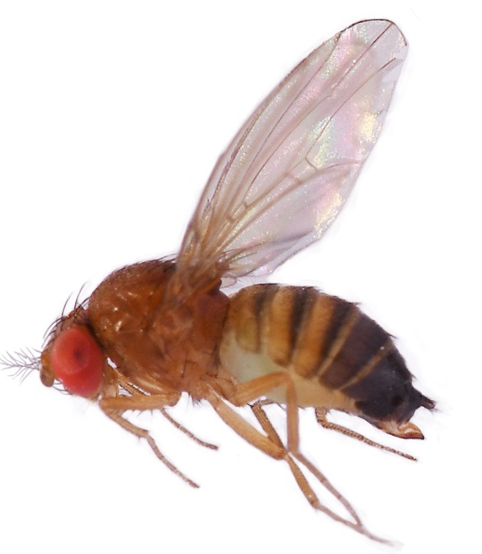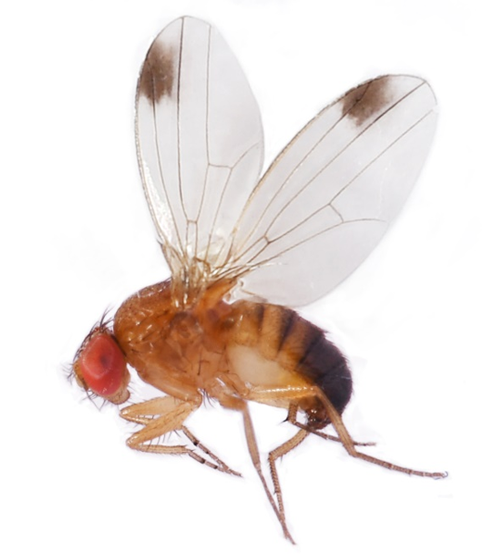


Spotted wing drosophila (SWD), Drosophila suzukii, occurs in Asia, Africa, Europe, Oceania and the Americas. It is a highly-invasiveand destructive pest ofberries and stone fruits, such as cherry, nectarine, apricot, plum, peach, strawberry and raspberry. Adults lay their eggs into semi-ripe and ripe fruits, and damage is caused by larval feeding and fruit rots due to secondary exposure to pathogens and other feeding insects. The larvae are difficult to target with pesticides and there are reports of up complete crop loss if left unchecked. Russell IPM offer a variety of traps and lures for monitoring and mass trapping as well as a general repellent as part of a push-pull strategy.
Adult male SWD are 2 to 3.5mm in length, with thick orange-brown bodies and bright red eyes. The abdomen is covered with thin horizontal bands. Wings are slightly grey and transparent.Within two days of emergence, male SWD develop a dark spot on each of their wings, visible with the naked eye. The males also have two sets of black tarsal combs on their forelegs. Adult female SWD have larger abdomens than males and no wing spots. Females possess a serrated ovipositor (egg laying organ) to penetrate the skin of developing fruits in order to deposit their eggs. Eggs are long and whitish, with thin white filaments extending from one end. Larvae are creamy-white with small black spots marking the head. They reach 3.5mm in length. Pupaeare creamy-yellow when new. Red eyes become visible during pupation, and mature pupae appear brown or orange-brown. At the head end of the pupae are two small stalks.
Female SWD puncture the surface of fruit in order to deposit their eggs, which are sometimes seen sunken into the fruit and surrounded by a brown or black marks. Larvae then hatch and feed on the fleshy pulp within fruitsleaving large sunken holes, diminishing their quality. Consequently, the fruit rots due to secondary exposure to pathogens and other feeding insects. Pupal cases can be seen sticking out of fruits, particularly in softer and smaller hosts. Other Drosophila species also lay their eggs within fruit punctured by SWD.
SWD traps and lures can be used throughout the year for mass trapping or for monitoring in order to help with decision-making.